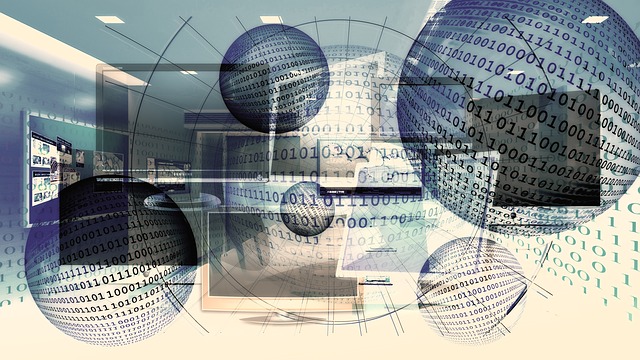The Future of Business: Harnessing Technological Bursts of Possibility


By Rohit Talwar
Business in a Transformative Context
We are seeing the physical world colliding with the digital world. Physical world people and businesses tend to focus on things they can see, touch, and manufacture. Even when their output exists largely in digital form (e.g. legal contracts) they still think of their world in very tangible terms. They are often comfortable with things they are familiar with, tend to think of progress in incremental ways, typically see technology as an enabler, and rarely see themselves as technology businesses.
Those born of or living in the digital world tend to be more forward looking, comfortable with technology, early adopters of new technology having grown up with social media, electronic devices and virtual communications. When they look at the world or an industry, they see the data and information first and look for streamlined systems solutions. They focus on outcomes and believe that – from vehicle manufacture to curing world hunger – the problem is at heart one that can be solved by technology-enabled redesign of the entire system, not just by human brain power and incremental improvement. Their view is that the application of science and new technologies are the way to develop solutions to existing problems, and to capitalising on emerging opportunities.
Technology’s “Possibility Explosion”
We are seeing a “possibility explosion” from exponential science and technology developments. Not only that, we are seeing the potential of the combinational impact of technologies that are being developed in tandem, e.g. artificial intelligence (AI) and robotics. What we know about these technologies is that they will drive dramatic and rapid change; in society, across industries, business, leisure, government, healthcare, and education.
The boundaries between magic and science are blurring. There are some radical developments taking place, many of which we will see come to fruition during our working lives including mapping and uploading the human brain, and cognitive, genetic, physical and electronic enhancement of the human body. These radical developments – particularly when put together with AI – could create challenging ethical dilemmas should machines gain self-awareness and even emotional intelligence.
We don’t have to look very far into the past to see the transformative impact of combinational technology development. Although the pace of change is accelerating, transformation in ICT has been ongoing for some years, so we have an evolutionary model we can look to. Think of the computer; from room-sized machines in air conditioned rooms, to the desktop, the laptop, and the tablet. Now consider the parallel development of the telephone, from the desktop to the “luggable” mobile, mobile with apps, and the smartphone. Just think for a second how transformative smartphones alone have been, how they have become part of the fabric of our daily life, and how we take for granted the ability to access information, communicate and be entertained on the move. The following examples demonstrate the exponential possibilities that are on the horizon in the aftermath of the most recent technological bursts of progress.
- Brain–computer interface (BCI) is a direct communication pathway between an enhanced or wired brain and an external device. A BCI is often directed at researching, mapping, assisting, augmenting, or repairing human cognitive or sensory-motor functions, but their application could also extend to “mind control” of objects and devices.
- Wearables and Implants or near body devices are coming into play. Many are currently being used for health and sports performance monitoring but increasingly we see wearable technology for other uses; Google’s Glasses and the Apple watch being just two examples. Soon, we will see device recharge technology built into his clothing fabrics, conductive fibres woven into fabric that provide processing capacity for wearable devices, and GPS tracking devices fitted into shoes. We are already used to some implants: heart pace-makers, cochlear implants, and ocular implants for example. But a new range of implants will help to enhance other body functions into the future including memory for our electronic devices. Some of these technologies are being patented now.
- Augmented and virtual reality look set to play increasingly significant roles as we seek ever more immersive experiences. A growing range of devices, surfaces, and appliances in the home, office, factory, and school will be connected – creating the so called Internet of Things (IoT), and we will see new ways to interact with information. Estimates vary widely, but within ten years there could be between 200 billion and a trillion devices and objects connected to the internet, all capable of exchanging information and providing different sorts of functionality and experiences. Video and projection technologies will improve, including holographic technologies that will allow us to share information in new ways.
- Autonomous vehicles – A number of experiments are taking place on public roads across the world, and while cars have been the focus of much media attention, lorries, buses, trains, ships, and planes are all subject to developments in autonomous / driverless technology.
- 3D printing provides the opportunity to distribute production to where it’s needed and at significantly reduced costs. Why would you manufacture products thousands of miles away from the market and transport them, if instead you can make them where the consumer is? The 3D printed Strati car produced by Local Motors is a prime example. A typical car has say 5,000 components, whereas the electric powered Strati has 50. such designs can be developed 1,000 times cheaper than a traditional car and each vehicle manufactured up to 22 times faster.
- Artificial intelligence (AI) is arguably the big game changer and becoming more common place. We already see narrow AI in use in internet searches, customer targeting applications, and in predictive analytics. But AI has much greater capability that will emerge into every aspect of our lives in the near future. Increasingly devices will learn more about us, help to provide decision support to us and take on more of our tasks. We are automating a lot more of human social and workplace activity and that is set to continue at an accelerated rate.
The Future of Business
At Fast Future, we have identified six high value industry clusters that we expect to be radically impacted or enabled by exponential and combinatorial technology developments. Indeed, each underlying sector within each cluster is expected to worth US$1Tn or more by 2025:
- Information and communications technologies (including, AI, robotics and blockchain)
- Production and construction systems (From 3D/4D printing and synthetic biology to rapid, green and sustainable construction approaches)
- Citizen services and domestic infrastructure (from health and elder care to smart vehicles and new education approaches)
- New societal infrastructure and services (encompassing intelligent transport, the sharing economy and smart cities)
- Industry transformation (the modernisations of sectors such as financial services, accounting and legal)
- Energy and environment (from renewables and fracking to environmental protection and repair).
These technological advances will have an impact right across society and all business sectors, fundamentally changing many. For those that doubt the possible scale of impact, there are a number of prominent recent examples where established businesses have ignored the signals sent by new market entrants, new technologies and new business models.
For example, Kodak ignored new market entrants and were over confident in their brand and their customer loyalty. As a result, their market share declined rapidly and they rejected a technology innovation of their own invention – the digital camera. The company emerged from Chapter 11 bankruptcy protection in 2013 and is now a very different business.
Similarly, in 2000 the relative new entrant Netflix proposed partnership with Blockbuster. The suggestion was that Netflix would run Blockbuster’s brand online, and Blockbuster promote Netflix in stores. Netflix advantages were lower costs and greater product variety. Having turned down Netflix’ overtures, Blockbuster were unable or unwilling to alter their business model and went bankrupt in 2010, while Netflix has market capitalisation of over $65 billion.
Conversely, other companies have embraced the opportunity to deploy technology to develop products and services that put the customer at the heart of the operation.
UBER was founded as a consumer-centric transportation company that utilized licensed taxi drivers for ridesharing services. The basis of what we see today was the integration a mobile application to connect passengers with drivers of vehicles for hire within a specified geographical area. What differentiated Uber from hundreds of other taxi apps was a more customer oriented experience including the ability to track their vehicle as it is on route to them, driver rating, and new payment options including fare sharing between multiple occupants. Cuber is disrupting the market for taxi cabs and transportation in general and has already expanded into home delivery, food and helicopter services. It is also exploring driverless cars, drone delivery and on-demand urban air transportation.
Airbnb offers a user-friendly site for discovering and booking accommodation. The curated listings offer consumers far more than just “renting a spare room.” The proposition is about discovering cool, quirky, and creative properties. Rentals are generally 30-80% lower than available hotels. For the property owner, it is free to list with Airbnb who charge a 3% fee to process payments. Guests pay a service fee to Airbnb. They too have potential to transform a traditional service model – accommodation and space rental.
Harnessing Exponentiality
Moore’s Law has shown that $1,000 worth of computing power will double in capability every 18-24 months. If we apply that to the processing power of existing computers, in seven years or so we will see computers 128 times more powerful than today. Organisations that can develop the appropriate mindset and apply this notion of exponentiality could develop thriving business propositions and achieve dramatic growth.
Indeed, many organisations are trying to bring exponential ideas into their thinking. They are asking if technology can radically change what they do, and what they can change to solve more problems faster, deliver quicker and dramatically reduce process times. In short, they are using exponential thinking approaches to change the way they look at problems, solutions, and opportunities. They are changing the personality of their organisation, posing the question, “Should we play by the rules of the game or change the game itself?” They recognise that staying still – taking no action – is normally tantamount to going backwards.
Image: https://i1.wp.com/iconicinfo.net/wp-content/uploads/2019/05/monitor-862116_640.jpg?w=640&ssl=1


